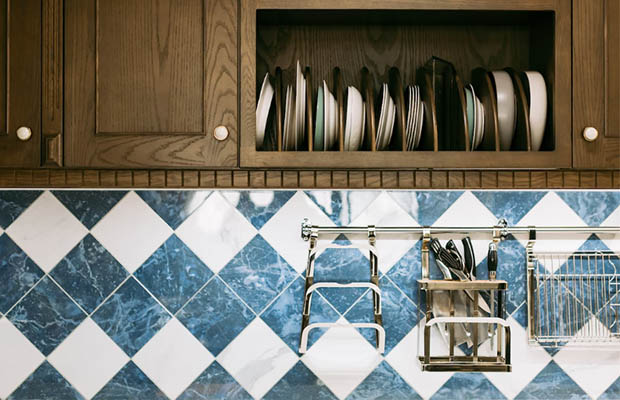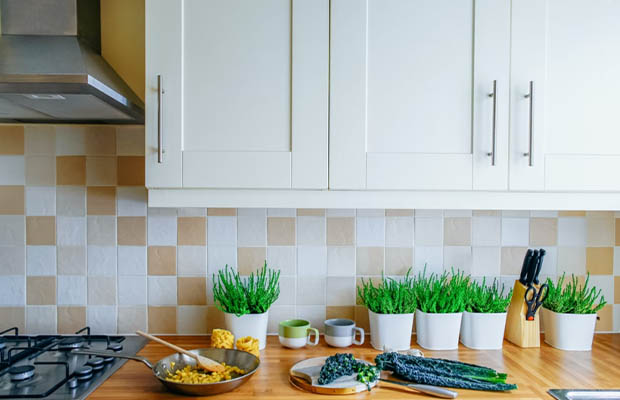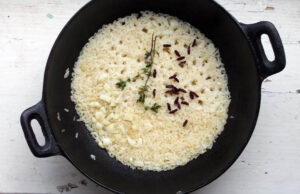Painting kitchen tiles can significantly reduce the cost of renovating an outdated bathroom or even kitchen. With our helpful step-by-step guide, you can test this simple and economical solution in your own home.
Ceramic tile is the perfect surface material for kitchen flooring, countertops, and backsplashes due to its durability and ease of upkeep. However, the incorrect tile can give your kitchen a beaten-down, outdated appearance that doesn’t quite fit with modern appliances and furnishings.
Here is a suitable location for you if you want to paint kitchen tiles. You can find out more about it by reading on.
Table of Contents
Can You Paint Kitchen Tiles?
Yes, there are a variety of reasons why people choose to paint tiles. It is a financially wise upgrade, to start. In high-traffic areas like floors, kitchens, and bathrooms, painting tiles can freshen up your room and increase the lifespan of tiles.
However, paint also hides the tile’s original features, and grout lines are probably going to be painted over. Tile painting is not advised in locations near water or in high-traffic areas. Particularly because the paint tends to chip easily, painting shower tiles is not advised.
However, he does not suggest that a homeowner purchase a refinishing kit and repair bathroom tiles themselves. He recommends a professional paint job instead of using high-quality epoxy paint, which is extremely resilient and challenging to scratch or damage.

Steps To Paint Kitchen Tile
Choose Correct Spot
Although you can paint any ceramic kitchen tile, there are some areas where the paint will likely last longer. You may want to steer clear of the floor and the countertop next to the sink if there are high traffic and high moisture areas where you plan to paint ceramic tile. Instead, choose parts of the kitchen where the refinished surface won’t be used as frequently, such as the backsplash behind the stove or the countertop farthest from the sink, like the breakfast bar or island.
Prepare Tile
You must first prepare the kitchen tile in order for paint to adhere to the ceramic before using a brush on it. Since dirt, grease, and mold residue can prevent the paint from properly adhering, cleaning the tile is essential. Remove any dirt that may be on the tile’s surface by using a mildly abrasive commercial tile cleaner. Scrub the tile with bleach or hydrogen peroxide if mold is present. Sand the tile once it has been cleaned. Ceramic tile has a glossy finish that makes it difficult for paint to adhere; sanding the surface produces a texture that improves paint adhesion. Prior to painting, be sure to thoroughly clean the tiles to remove any sanding dust.
Make repairs before painting if your tile is in any way damaged. Fill in any chips or cracks with caulk or epoxy, and then wait for it to dry for a few days before painting.
Choose The Right Products
Your ceramic kitchen tile needs to be primed properly for a smooth, even finish. To create the ideal surface for the paint to adhere to, pick an epoxy or urethane bonding primer. The most durable option is typically an epoxy formula, which you can cover with any kind of paint and offers the greatest level of durability. Choose high-gloss or semigloss paint when it comes to the actual paint. You can use latex, oil, or epoxy paint. Although latex typically dries quickly, its softer finish can come off if the surface is scratched. Oil-based paint typically has a more durable finish, but it takes longer to dry and is more difficult to clean up. The most durable type of paint to use when painting ceramic tile on the floor or around your kitchen sink is epoxy.
Slow And Steady
The paint application process calls for patience. In an effort to finish the project more quickly, avoid applying several thick coats of paint because the paint is more likely to peel or tear off when layers are thicker. Instead, use several light coats, making sure to give each one plenty of time to dry before adding the next. Allow the paint to dry for two to three days after you’re satisfied with the tile coverage. If you want to help protect the painted tile from moisture, scuffs, and other surface damage, you can use a clear, water-based top coat after it has fully dried.
What Is The Best Paint For Tile?
Not all types of paint are appropriate for use on tiles. Regular wall paint won’t stick to the surface because water-based paints crumble. Because it is very resistant to abrasion and cleaning agents, epoxy paint is a good option. As well as silicone-based paint, alkyd urethane and enamel paint are frequently used. Additionally, there are specific water-resistant tile paints that are made to withstand the high temperatures and moisture of bathrooms and kitchens.
Pros Of Painting KitchenTile
It’s cost-effective. Painting tiles instead of replacing them is more cost-effective. Old tiles can be given a new look and feel by painting them. Compared to costly replacement options, painting supplies are affordable.
Homeowners can finish the project on their own. The color and pattern of a room can be changed by painting tiles, which is a straightforward DIY project. You can alter your tiles to fit your needs and preferences. Additionally, painted tiles require little maintenance. The solution is routine cleaning with a mild detergent.
Cons Of Painting KitchenTile
Be prepared for a lot of work. Tile painting requires a lot of prep work, such as fixing any broken tiles and priming the surface.
It’s not permanent. There is no long-term fix for painting tiles. Instead, it extends the life of your current tiles. Eventually, the paint will peel or crack. Increased moisture exposure or foot traffic will speed up deterioration. Your painted tiles will last longer if you use mats and rugs, especially in high-traffic areas.
A paint’s drying process takes time. For a while, your kitchen or bathroom won’t function. Plan this for a time when few people will need to use those spaces, i.e., when few people are available.
Tips For Painting KitchenTile
Amass all the supplies you’ll require, such as paint, primer, rollers, brushes, sealant, and any stencils you might need for a patterned finish. The tiles should then be thoroughly cleaned and dried before painting. Do not skip this step because it can help to remove any dirt, dust, grease, mold stains, or food residue.
Fix any broken tiles after that. Use a two-way, paintable epoxy filler to repair cracked tiles. Particularly for high-gloss tiles, sanding the tiles will provide something for the paint to adhere to. Last but not least, prime the tiles before painting. Before returning to regular use, make sure to give them enough time to dry and apply any sealants.
While painting kitchen tiles can be done by the handyman in your house, we advise finding a qualified professional who will stand behind their work for painting bathroom tiles. This job is best suited to someone with years of experience because of the frequent exposure to water and humidity. According to him, the contractor will be more likely to uphold a warranty on the work and fix any problem areas if they have this kind of staying power.


